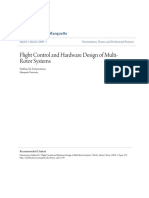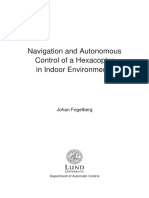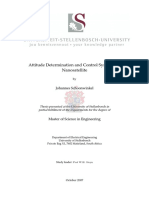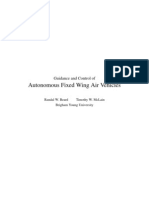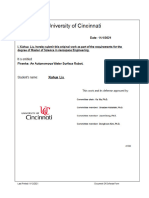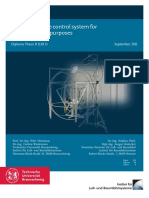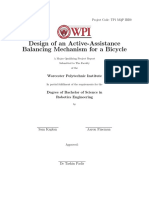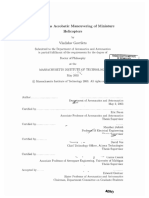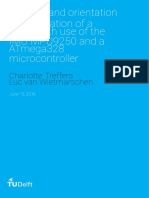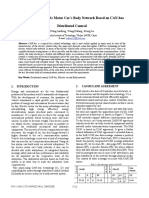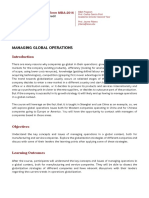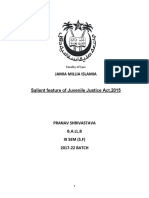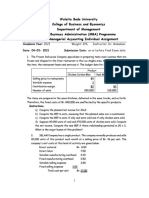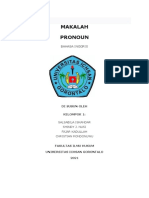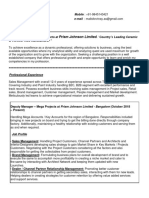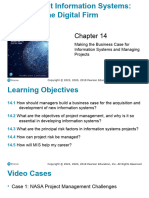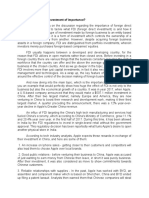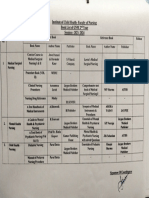100% found this document useful (1 vote)
137 views24 pagesMulti-Rotor Flight Control Design
This thesis presents research on flight control and hardware design for multi-rotor systems. Specifically, it covers crucial concepts for achieving quadcopter flight, including orientation estimation and control system implementation. It also provides comprehensive hardware and software specifications for a quadcopter system intended for research applications. The thesis derives a mathematical model for quadcopter flight dynamics, explores orientation estimation using MEMS sensors, discusses sensor fusion algorithms, and details implementation of a PID control system.
Uploaded by
029Muhammad Robith Fikris SholihCopyright
© © All Rights Reserved
We take content rights seriously. If you suspect this is your content, claim it here.
Available Formats
Download as PDF, TXT or read online on Scribd
100% found this document useful (1 vote)
137 views24 pagesMulti-Rotor Flight Control Design
This thesis presents research on flight control and hardware design for multi-rotor systems. Specifically, it covers crucial concepts for achieving quadcopter flight, including orientation estimation and control system implementation. It also provides comprehensive hardware and software specifications for a quadcopter system intended for research applications. The thesis derives a mathematical model for quadcopter flight dynamics, explores orientation estimation using MEMS sensors, discusses sensor fusion algorithms, and details implementation of a PID control system.
Uploaded by
029Muhammad Robith Fikris SholihCopyright
© © All Rights Reserved
We take content rights seriously. If you suspect this is your content, claim it here.
Available Formats
Download as PDF, TXT or read online on Scribd
/ 24
